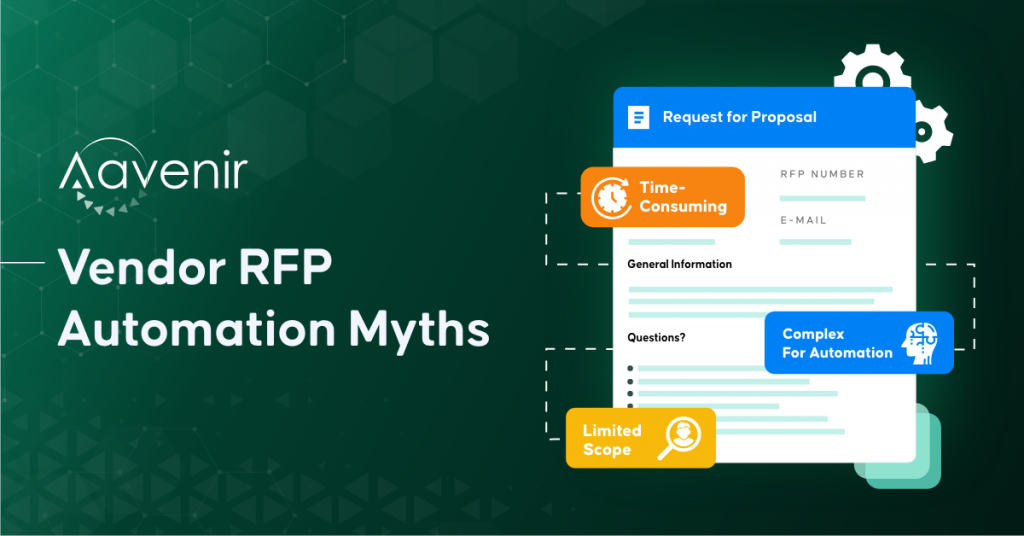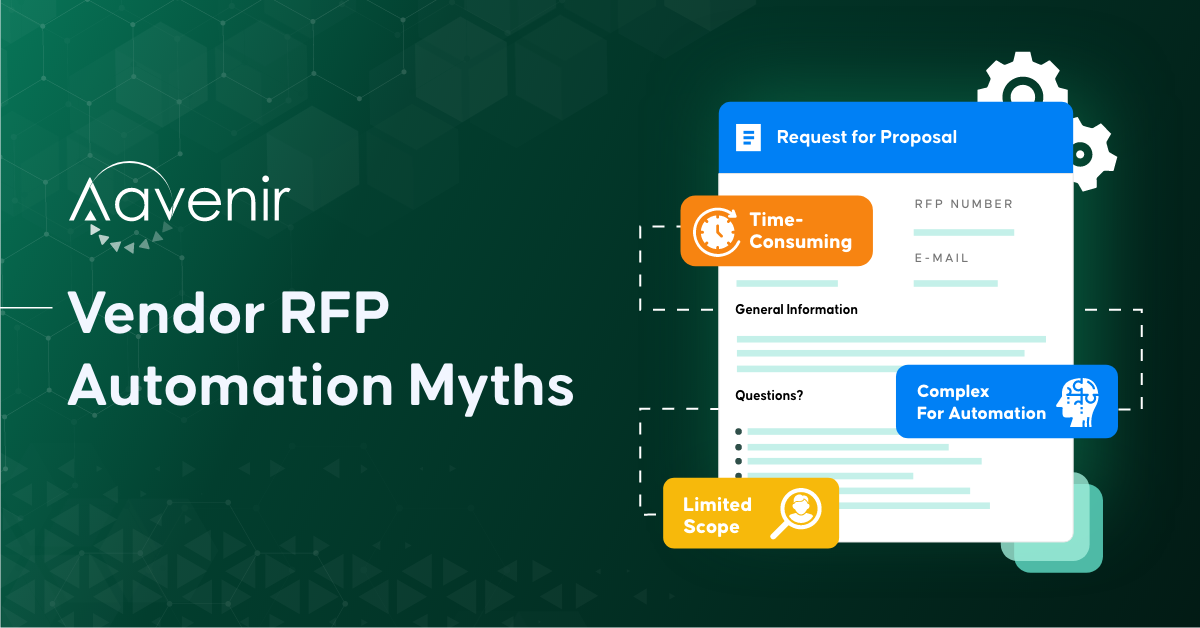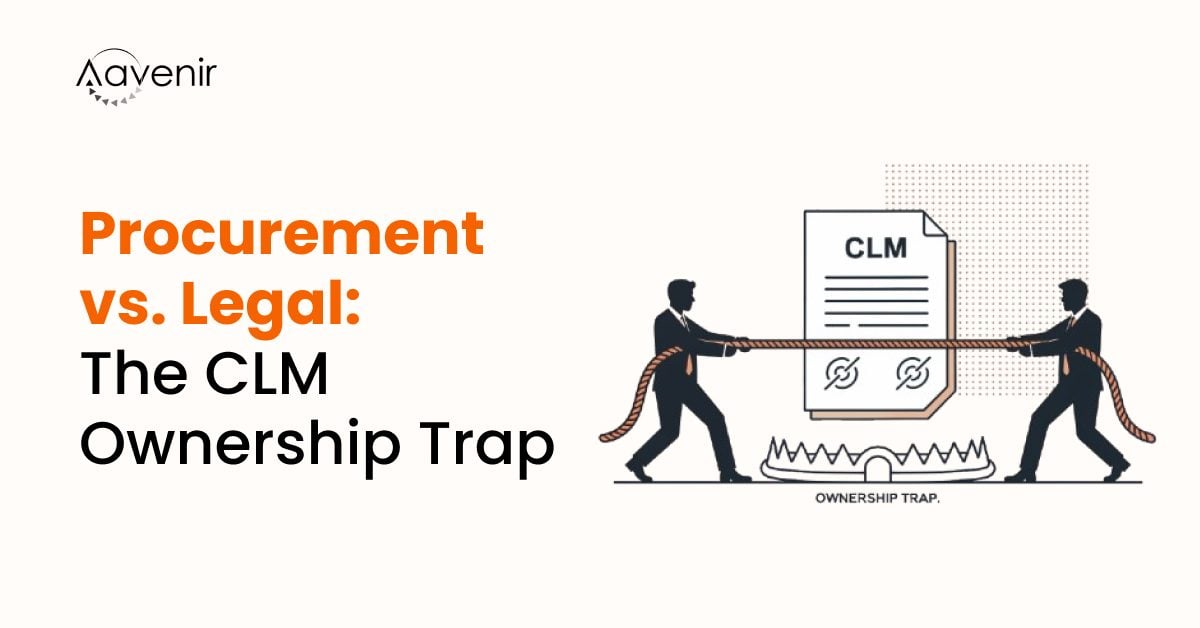50% of Vendors believe that RFPs are biased towards one vendor or solution.
There are many myths and misconceptions surrounding tenders and RFPs, which can cause many companies to neglect RFPs entirely in favor of leads that come from exhibitions, events, direct inquiries, and even word-of-mouth referrals.
Some think that RFPs inherently are only looking to find the lowest bidder while others feel that most RFPs are biased towards a particular vendor or a solution provider. And many think that RFPs take way too long to complete. A few of them also think that RFP solutions can only be used for responding to an RFP.
Here in this blog, we are going to bust all these vendor RFP automation myths. What we’re going to do today is explain why RFPs aren’t anything to fear.
Don’t fall for these 3 Vendor RFP Automation Myths

Myth 1: RFP is a time-consuming task, so procurement managers can only run a handful of RFPs per year.
Yes, RFPs can be more complex and lengthy than ever before. That’s the grain of truth in this first myth. But this is a self-perpetuating situation because by assuming RFPs are time-consuming, procurement teams will often budget their time to limit how many RFPs they will handle in any given year.
There are multiple reasons why RFPs have become progressively lengthy—like increasingly complicated technical specifications and the need to conform to more rigorous compliance standards. But at the same time, requirements have increased and procurement technology has developed to meet our new needs through the development of RFP creation tools and solutions.
Yet if used incorrectly, improved RFP technology can also contribute to the length of time it takes to manage a sourcing event to completion. The solution to time-consuming RFPs is to only include the information and product-related requirements necessary and ignore everything else. But that means finding a process and technology that removes the manual work and streamlines steps by focusing on the requirements of the sourcing team.
A major component of this process change and solution hunt is to identify what parts of the RFP need to be customized and delivered by a human, and what can be automated… which leads us to the third vendor RFP automation myth.
Myth 2: RFPs are so complex that there’s simply no room for automation.
Unlike the other myths on this list, there’s no grain of truth here. In fact, the opposite is true. Complex as RFPs can be, there is always a place for automation. Complex doesn’t mean unique. Automation not only thrives on complexity, but its implementation also simplifies the complex system by pulling out the thread of a common solution. With RFPs in particular, there are multiple points in the process where you can infuse the procurement and supplier data you already have to implement automated steps along the way.
At the very simplest end of the spectrum, static data—like purchaser names and contact details—can be automatically loaded. But there is a wide range of process steps within even the most complex RFPs that can benefit from artificial intelligence and machine learning. Automation doesn’t replace the collaborative, human, relationship-based parts of RFPs. Instead, it helps augment the source in many ways. Here are some examples:
- Vendor profiles can be automatically reviewed and updated within the RFP.
- Progress can be tracked along the lifecycle of the RFP event.
- Response reminders can be formulated and delivered to stakeholders throughout the organization.
- RFP scoring can be calculated and measured automatically.
- Vendor evaluations can be analyzed based on set criteria.
Myth 3: RFP Solution can only be used for responding to RFPs.
RFP solution is designed to optimize the response process to RFPs and other information requests. In addition to providing a response to these RFPs, it can also be used to create:
- Requests for Information (RFIs)
- Due Diligence Questionnaires (DDQs)
- Security Questionnaires (SQs)- Any other Q&A-type information requests your company receives in the sales cycle
While creating these requests is the primary use of RFP Software, the content stored within its central repository or library is valuable for all stakeholders in an organization. This repository can be used as a central source of truth across departments for training, supporting customers, creating proactive proposals, and storing internal content.
With a proper RFP creation solution, the organization can streamline the spending to fewer suppliers and drive better value from those relationships by supplier base rationalization.
For a lot of procurement managers, the spending from RFPs is often treated as less complex and less strategic spend within the organization. But that doesn’t mean the RFP solution needs to only serve the purpose of RFPs response. Organizations can host sourcing events by leveraging the data and automation that are usually applied to transactional spend—and applying it to the strategic spend handled by RFPs to reduce ad-hoc buying.
With artificial intelligence (AI) algorithms, organizations can radically improve the supplier-identification process, scanning millions of suppliers in a fraction of the time. The procurement team receives AI-based vendor recommendations by frequently refreshed source data for millions of vendors coming from a variety of proprietary, public-source, and commercial databases, some global and some region-specific.
Source Smarter, Faster and Better
Although many steps in the RFP process are manual, repetitive, and time-consuming, you can source smarter, faster, and better with RFP Automation Software. One such software is Aavenir RFPflow, built on ServiceNow. RFPflow not only streamlines your sourcing processes but also helps you find quality suppliers 2X faster. From preparing and publishing RFx to evaluating vendors and monitoring KPIs – all you can do with RFPflow. Its AI-driven automation offers a simplified RFX process management for procurement teams and accelerates the RFx-to-award cycle time by creating easily accessible repeatable RFI/RFP/RFQ templates, bringing all stakeholders on a single platform, and standardizing the end-to-end sourcing processes.
Test drive the RFPflow product on ServiceNow instance to get immediate ROI with a negligible implementation timeline and deployment cost.



